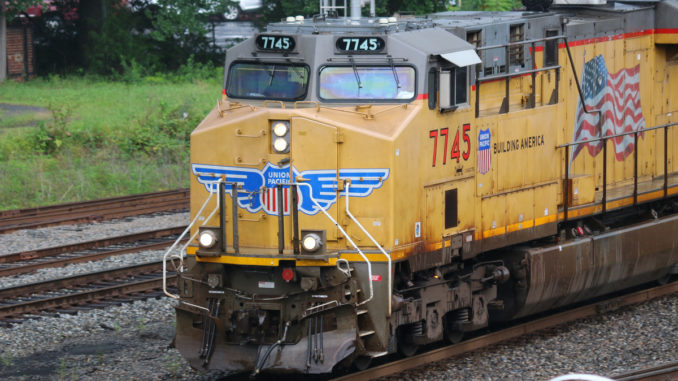
Union Pacific said it has experienced a 5 percent decline in vehicle-train collisions at railroad crossings in the first half of 2017.
The railroad reported a 2.27 crossing accident rate across its 23-state network, calculated by the number of Federal Railroad Administration reportable grade crossing accidents per million train miles, compared to a 2.40 rate during the first half of 2016.
“One of the primary purposes of Union Pacific’s safety programs is to reduce railroad crossing accidents and it is encouraging to see positive results,” Cameron Scott, Union Pacific executive vice president and chief operating officer, said in a news release. “Communities play a big role in helping their friends, neighbors and family members staying safe around railroad tracks. We will continue working with local authorities to share our safety message and educate drivers.”
Cities and counties determine where roads intersect with rail lines and warning signs at public railroad crossings. Union Pacific’s Crossing Assessment Process (CAP) studies the crossing characteristics and focuses its efforts where incidents may be more likely to occur, the railroad said.
While all crossings complying with Union Pacific maintenance standards are safe for drivers, the program identifies safety enhancements that may require working with cities to add signage such as pavement markings. For private crossings, the company works with landowners to find alternative access that doesn’t cross the railroad.

